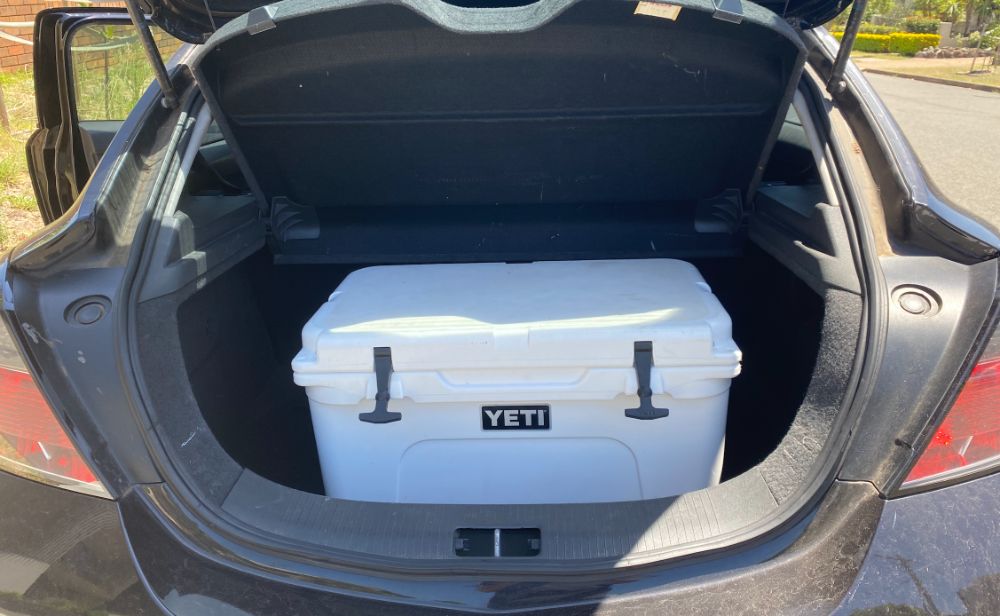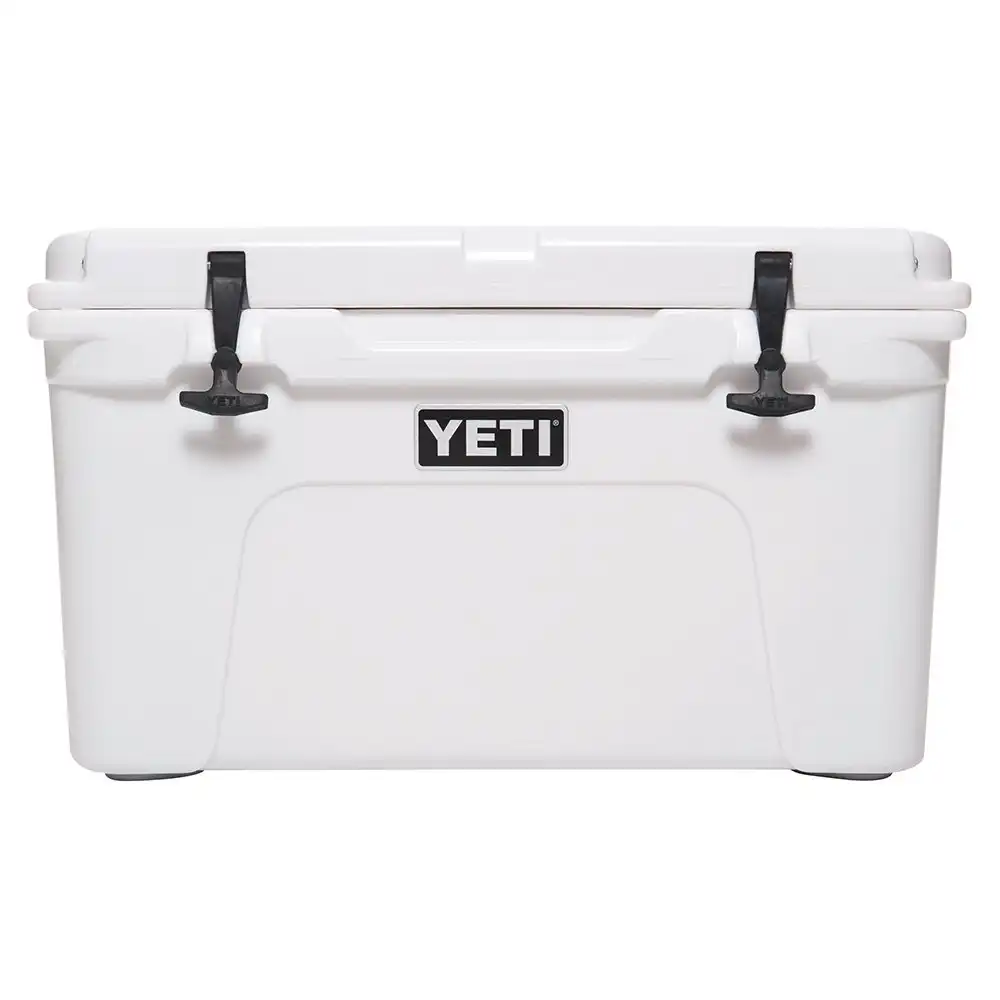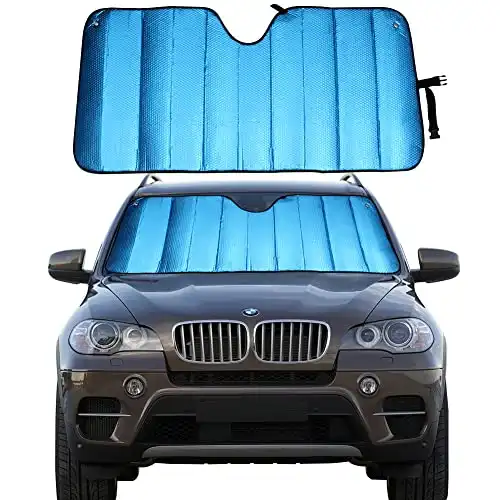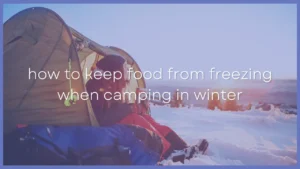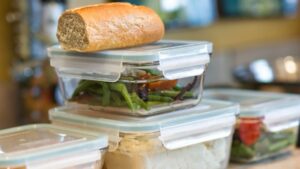If you are taking a road trip or heading out camping for a few days, there are probably some foods that you want to keep completely frozen so they stay fresh for when you are ready to eat them. Keeping food frozen is the safest way to keep meat and many other foods fresh.
So how do you keep your frozen food frozen for hours, or even days in the car?
To keep food completely frozen in your car pre-freeze it and place it in a high-quality cooler with ice packs or frozen salt water bottles as these will stay colder than ice and keep your items completely frozen. Keep the temperature inside your car as low as possible using A/C, opening windows and parking in the shade.
If you do not open the cooler, it should keep food frozen for 48 hours or more.
You can’t just dump a bag of gas station ice in any old cooler that isn't packed properly and expect your food to stay frozen.
Try to follow as many of the steps in this guide as you can and your food will stay frozen for days in the car and be fresh and ready to eat whenever you reach your destination.
1. Use Ice Packs, Not Regular Ice
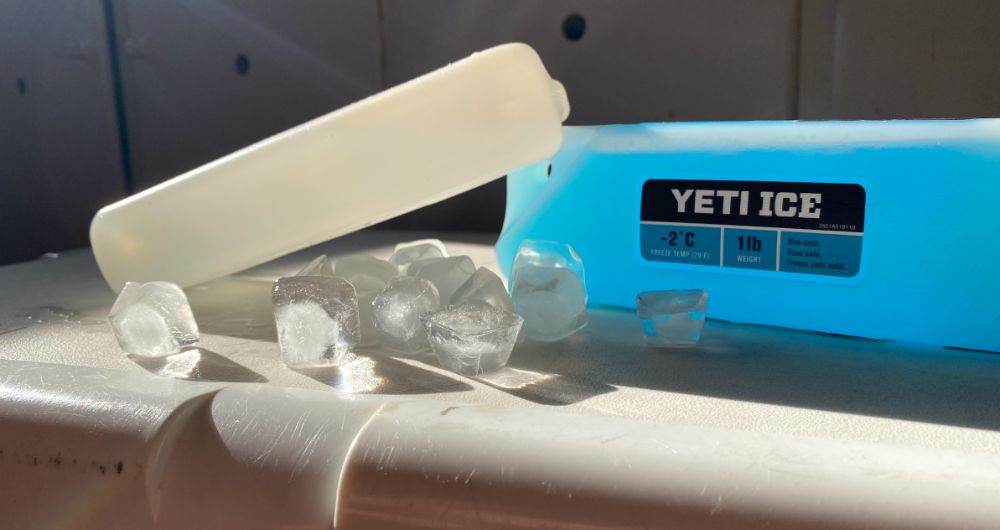
Ice alone in a cooler is not cold enough to keep food frozen – the temperature of regular ice hovers about 32ºF (0ºC) once it begins to melt. Add a few degrees for heat coming into your cooler and the temperature inside your cooler is more like the temperature of a refrigerator than a freezer.
Frozen foods will thaw completely in under a day at that temperature.
Your freezer at home is much colder, usually around 0ºF (-18ºC). To get your cooler to stay this cold, you need to use ice packs designed for the cooler.
The fluids in these ice packs will stay as low as 20ºF (-7ºC), much colder than regular ice and this can keep food frozen for 24-48 hours in a regular cooler and up to 5-7 days in a high end cooler like these coolers that are the best at ice retention.
These packs are also reusable which is good for the environment and saves you money as you don't have to buy ice. Just make sure you get ones with extra low temperatures as some are better than others.
The Engel 20 Ice Pack (available at Amazon) is designed to stay super cold at 20ºF/-7ºC and is one of the coldest ice packs out there.
This ice pack is designed to stay much colder than regular ice.
At 20ºF (-6.7ºC) it can keep food and ice cream frozen in your cooler for longer.
If you can’t find enough reusable ice packs, then the next best thing is to add salt to regular water and create your own DIY ice packs. Salt will lower the overall temperature of the ice to around the same temperature as ice packs, or cold enough to keep food frozen.
See my guide for the fundamentals of keeping food frozen in a cooler.
2. Choose a High-Quality Cooler

When it comes to coolers, quality makes all the difference, and you really do get what you pay for.
A simple $40 plastic-walled cooler will struggle to keep temperatures low in a car for more than a day or two, and keeping food frozen will be almost impossible – too much heat seeps in through the insulation.
To travel with frozen food in a car, you need a high-quality insulated cooler. The most popular and proven brand for this kind of cooler is Yeti, which offers a huge range of cooler sizes.
Yeti are the leaders in the high-end cooler market for a reason. Their coolers are extremely high-quality and can hold ice for 3-7+ days at time. Nearly indestructible these coolers are backed by a 5-year warranty and are still my #1 recommendation at the best cooler brand on the market.
Cheaper brands like the Coleman Xtrreme cooler will suffice as long as your road trip isn't too long and weather outside isn't too hot. They feature thinner foam insulation compared to high-end coolers but they'll still keep for colder for longer than a cheap traditional cooler.
If budget is a concern for you check out my list of the cheapest Yeti cooler alternatives all under $150.
3. Pre-chill Your Cooler
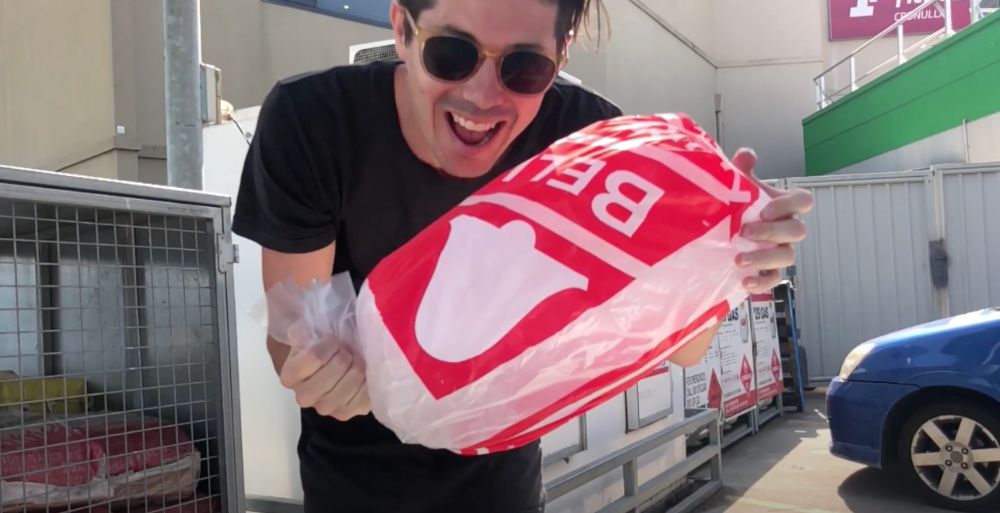
This tip only applies to high quality, foam-insulated coolers, but it’s super important: chill the insulation in your cooler before you fill it with your ice and frozen food.
My dad once borrowed my Yeti cooler and my Coleman Xtreme cooler for a trip away to go blueberry picking and bring them home. The Yeti cooler usually keeps ice much longer, however dad made a big mistake.
He left the coolers baking in his car in the middle of summer while he was on a farm. When it came time to go home with all the blueberries he picked with some ice in both coolers and started the 5 hour drive home.
The insulation in the Yeti cooler had absorbed so much heat during the day that ice melted before he even got home. Ice will melt quickly in high-end coolers if you don't pre-chill them, but if you do pre-chill them ice can last ages.
Pre-chilling a cooler is really easy.
You can do this by placing ice packs or regular ice in the cooler for several hours, or preferably overnight.
When you are ready to pack the food before you leave on your trip, just remove the ice packs or discard the ice before you load the cooler.
4. Start With Frozen Food

This tip might seem obvious, but start with frozen food that is as cold as possible. Don’t try to use a cooler to freeze food that is already thawed.
Instead, start with frozen-solid foods in your cooler. Place everything you want frozen in your freezer at home 24-48 hours before you leave. This allows enough time for them to drop in temperature to the low 0ºF/-18ºC of your freezer. The colder your food starts out the longer it'll take to thaw.
Don’t mix thawed food in with the frozen food (if you’re following this guide, the cooler will be too cold for regular refrigerated food). Use 2 different coolers if you can, if not pack all your frozen foods at the bottom (which we'll discuss next).
Pack your cooler with frozen foods only and the temperature will stay low enough in the car to keep them frozen for days.
Click here to see how long different foods stay frozen in a cooler.
6. Pack Frozen Foods At The Bottom Of The Cooler
Use this rule to keep your food frozen in the car longer: cold air sinks to the bottom of the cooler and everytime you open the cooler warm in comes in through the top. The bottom of the cooler will be the coldest part.
Keep the foods that most need to stay frozen like raw meats at the very bottom of the cooler. They will benefit from the natural cold zone at the bottom.
Pack ice and items that don't need to stay as cold like drinks and dry food at the top of the cooler.
7. Control The Internal Air Temperature Of The Car
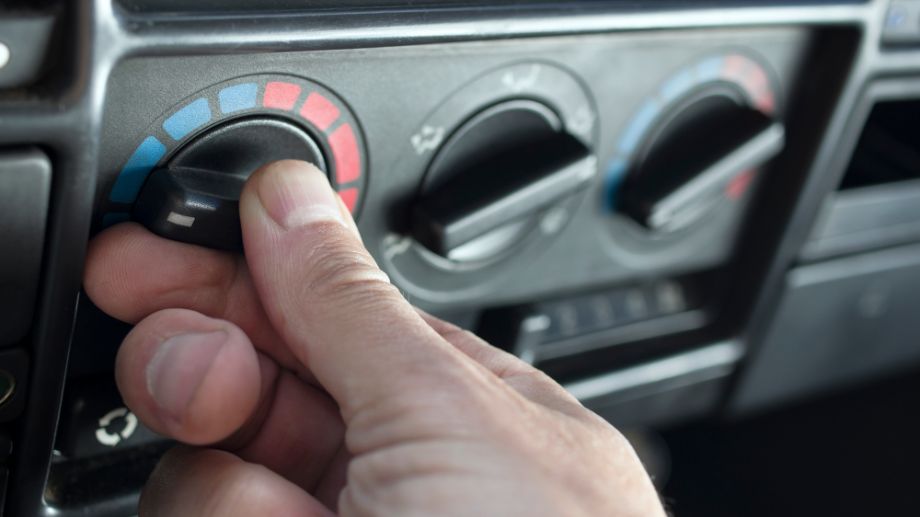
Your cooler will keep your food frozen for a lot longer if you keep the air in the car cool.
Use the A/C to cool the car when it’s really hot. If it's colder outside, roll down the windows or keep the heater on low.
The colder the air in your car, the longer your frozen foods will stay cold in the cooler.
7. Keep Sunlight Out Of The Car
Try to avoid a lot of direct sunlight that will warm up the car.
I like to find parking spots with some shade from a tree or building, even if it means walking farther from my parking space to get to where I’m going.
It’s definitely a good idea to get a reflective sunshade for your windshield, too. These will keep a massive amount of heat out of your vehicle and away from your frozen foods.
Made from premium materials this windshield sun share uses reflective aluminum and thick 5-layer bubble material to keep your car cool, even when in direct sunlight. Folds small for easy storage.
8. Keep The Car and Cooler In The Shade
Whenever possible, try to keep the cooler in a shady place.
When I’m driving, I keep a blanket over the cooler to absorb some of the sunlight that comes through the windows. The blanket also adds a little insulation and seems to help keep my food cooler.
You can make a DIY reflectix cooler cover which is another great way to insulate your cooler better and keep food frozen for longer.
During the warmer months of the year, you should remove the cooler from the car when you stop for more than a few hours and place it in the shade. If you can put it inside of a cool building, that’s even better.
9. Consider Dry Ice…But Be Extremely Careful
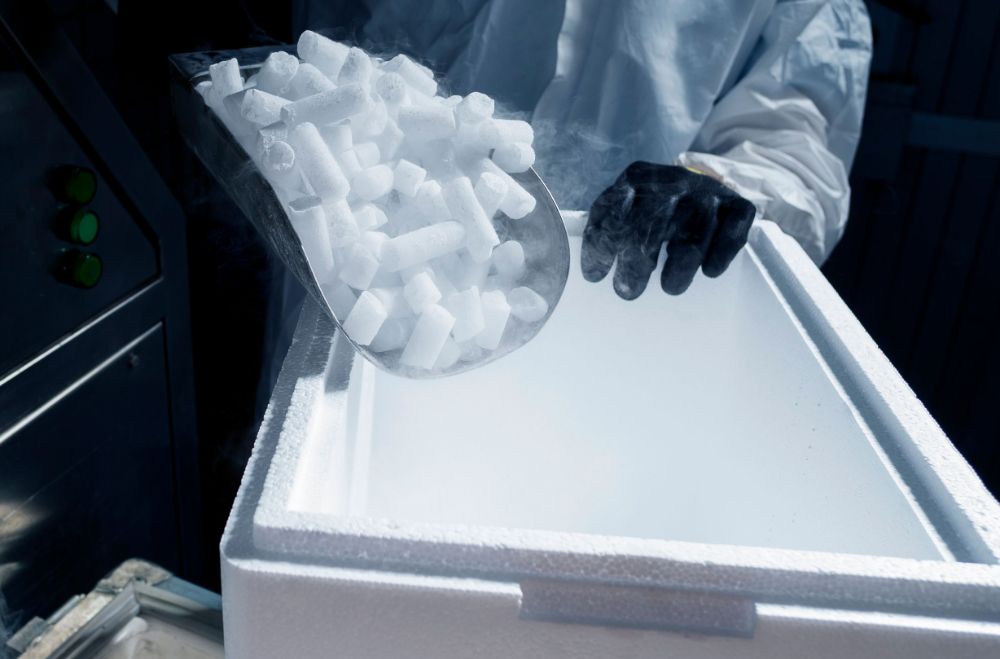
At -190.2ºF/-78.5ºC dry ice is MUCH colder than regular ice and can be used to keep food completely frozen in your car for days at a time. However, it should be used with extreme caution.
Dry ice is frozen carbon dioxide and as it heats up it sublimates and turns into carbon dioxide gas. Too much of this gas in a small space (like a car) can displace oxygen and cause you to asphyxiate.
In rare circumstances dry ice can kill you or cause you to pass out. There was a case where an elderly woman died inside a car filled with dry ice as they were stopped with the windows closed.
If you use dry ice in your car ALWAYS keep the windows open and maintain good ventilation. If you do this you should be fine and then dry ice is a great way to keep food frozen in your car.
Just make sure you take the right precautions.
Summary
Traveling in the car with frozen food doesn’t have to be hard. Remember these tips:
- Use ice packs or salted ice, which keep the food colder than regular ice
- Choose a great cooler with internal insulation
- Pre chill your cooler, pre freeze your food, and pack frozen food at the bottom of the cooler
- Keep the car as cool as possible by avoiding sun and using the A/C
- You can use dry ice to keep food frozen, but you need to keep the windows open and car well ventilated at all times when you're in it.
With these techniques, you’ll be enjoying quality food on your car trips for days longer than before.

